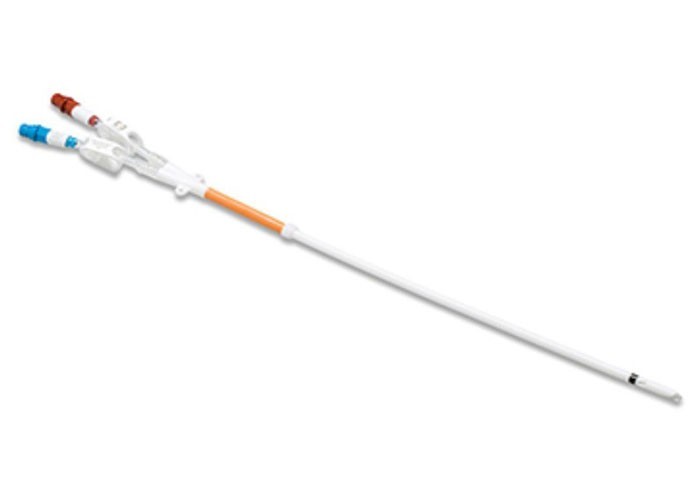Palindrome™ HSI–Heparin Coated & Silver Ion Antimicrobial Dialysis Catheter
The Palindrome™ HSI symmetric tip dialysis catheter has a unique symmetric tip and laser-cut side slots minimize recirculation and the likelihood of positional occlusion, as well as reduce clot formation by decreasing debris attachment.
Maximum Flow Rates
The Palindrome™ Precision dialysis catheter - with its internal lumen design, 14.5Fr diameter, and durable Carbothane™ material - is able to consistently deliver high flow rates.
High tensile strength material and internal lumen design optimize inner diameter integrity without compromising flexibility or kink resistance.
Dependable Patency
The unique symmetric tip design and laser-cut side slots promote catheter patency∙
- Side slots are designed to reduce the likelihood of positional occlusion.
- Laser-cut surfaces are designed to discourage platelet adhesion and minimize debris attachment
Reduces Recirculation 
The Palindrome™ Precision catheter reduces recirculation rates to meet NKF/KDOQI guidelines when in forward or reverse flow:
- Studies show that dialysis lines are frequently reversed.
- When lines are reversed, blood recirculation increases.
H–HEPARIN COATING
The Clinical Challenge: Thrombosis
Catheter thrombosis can present challenges, including:
- As many as 40 percent of catheter failures are attributed to venous thrombosis and fibrin sheath formation.
- Approximately 17–33 percent of catheter removals are attributed to thrombosis.
- Complications from thrombosis result in inadequate flow rates, longer dialysis times, and increased costs
Our Solution: Noneluting Heparin Coating Technology
Our noneluting heparin coating covers the external surface of the catheter from tip to cuff and internally from tip to adapters — providing total protection.
The heparin coating has a triple-action formula:
Heparin — Antithrombogenic
Negative charge — Nonthrombogenic
Hydrophilicity — Nonthrombogenic
Our noneluting heparin coating reduces the likelihood of platelet adhesion on the catheter surface and inhibits fibrin sheath propagation.
SILVER ION ANTIMICROBIAL SLEEVE
The Clinical Challenge: Catheter Colonization
Catheter colonization can present challenges, including:
- The skin surrounding the catheter insertion site is one of the most common sources of microbes that colonize central venous catheters.
- Central venous catheters colonized by skin organisms may develop biofilms and ultimately catheter-related infections.16
- The removal rate of catheters with exit-site infections is greater than 50 percent. In instances of tunnel tract infections, the rate of removal is as high as 70 percent.


